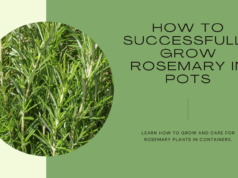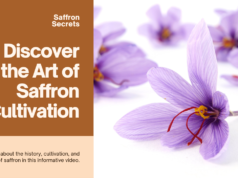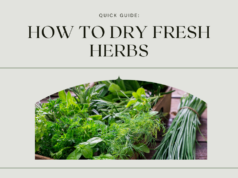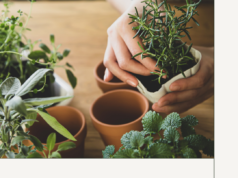
Welcome to the world of herb landscaping! If you’re looking to enhance your outdoor space with beauty and functionality, integrating herbs into your landscape is the perfect solution. Not only do herbs add a touch of natural beauty, but they also offer numerous benefits that can transform your garden into a harmonious sanctuary.
By strategically incorporating herbs into your landscape, you can create a lush and vibrant environment that pleases the senses and provides a host of practical advantages. From adding aromatic scents to attracting beneficial pollinators, herbs offer endless possibilities for enhancing your outdoor space.
Whether you have a sprawling garden or a tiny balcony, there are various ways in which herbs can elevate your outdoor space. Let’s explore the benefits of integrating herbs into your landscape and how they can bring joy and inspiration to your everyday life.
Key Takeaways:
- Integrating herbs into your landscape can enhance both the aesthetic beauty and functionality of your outdoor space.
- Herbs offer a range of practical benefits, from attracting beneficial insects to providing fresh ingredients for cooking.
- By selecting the right herbs and designing a well-planned herb garden, you can create a harmonious and visually appealing outdoor environment.
- Maintaining your herb garden requires essential care practices and addressing common issues that may arise.
- Incorporating herbs into your daily routine can add flavor to your dishes, promote natural healing, and create a spa-like atmosphere in your home.
Choosing the Right Herbs for Your Landscape
When it comes to incorporating herbs into your landscape, choosing the right ones is essential. Consider the following factors to ensure the success of your herb garden:
Sunlight Requirements
Different herbs have varying sunlight requirements. Some herbs, like basil and rosemary, thrive in full sun, while others, such as mint and parsley, prefer partial shade. Assess the amount of sunlight your garden receives throughout the day and select herbs that will thrive in those conditions.
Soil Conditions
Herbs have different soil preferences, so it’s important to understand your soil type before selecting herbs for your landscape. Some herbs, like lavender and thyme, prefer well-draining soil, while others, such as cilantro and chives, can tolerate a wider range of soil conditions. Conduct a soil test to determine its pH level and fertility and choose herbs that are compatible with those conditions.
Climate
Consider the climate of your region when selecting herbs for your landscape. Some herbs, like oregano and sage, are more cold-hardy and can withstand colder temperatures, while others, such as basil and lemon verbena, thrive in warmer climates. Research the hardiness zones of the herbs you’re interested in and ensure they are suitable for your area.
Complementary Combinations
Creating complementary combinations of herbs in your landscape can enhance both their growth and visual appeal. Some herbs, like dill and fennel, have tall, feathery foliage that can provide a beautiful backdrop for shorter herbs like thyme and chamomile. Experiment with different combinations to find ones that work well together.
Selecting Herbs for Your Landscape
| Herb | Sunlight Requirements | Soil Conditions | Climate |
|---|---|---|---|
| Lavender | Full Sun | Well-Draining | Cold-hardy |
| Basil | Full Sun | Well-Draining | Warm-climate |
| Rosemary | Full Sun | Well-Draining | Cold-hardy |
| Mint | Partial Shade | Moist | Wide Range |
| Parsley | Partial Shade | Moist | Wide Range |
Consider these factors when selecting herbs for your landscape to ensure optimal growth and a visually pleasing herb garden. By choosing the right herbs, you can create a harmonious and thriving outdoor space that adds beauty and functionality to your landscape.
Popular Herbs for Landscaping Purposes
When it comes to herb landscaping, there are several popular herbs that can elevate the beauty and functionality of your outdoor space. Whether you’re aiming for a fragrant garden or looking to enhance your culinary adventures, these herbs offer a range of benefits. Let’s explore some of the most sought-after herbs for landscaping purposes:
Lavender
Lavender is a beloved herb known for its stunning purple flowers and delightful fragrance. This versatile herb can add a touch of elegance to your landscape and attract pollinators like butterflies and bees. Additionally, lavender’s calming aroma makes it perfect for creating a tranquil and relaxing outdoor space.
Rosemary
Rosemary is not only a flavorful culinary herb, but it also possesses aesthetic qualities that make it a popular choice for landscaping. With its needle-like leaves and small blue flowers, rosemary adds texture and visual interest to your garden. This herb thrives in sunny locations and can withstand dry conditions, making it an ideal choice for water-wise landscapes.
Basil
If you enjoy cooking, basil is a must-have herb for your landscape. This aromatic herb not only adds a burst of flavor to your dishes but also brings vibrancy to your garden with its lush green foliage. Basil thrives in warm, sunny spots and can be grown both indoors and outdoors, allowing you to enjoy its fresh flavor year-round.
Thyme
Thyme is a versatile herb that offers both culinary value and ornamental appeal. Its small, fragrant leaves and delicate flowers make it an excellent ground cover or filler plant in your landscape. Thyme is known for its ability to withstand drought and is a great choice for adding visual interest to rock gardens or bordering walkways.
Mint
Mint is a refreshing herb that adds a burst of fragrance to your garden. With its fast-growing nature and vibrant green leaves, mint is an excellent choice for filling in empty spaces or container gardening. However, due to its vigorous spreading habit, it’s best to grow mint in containers to prevent it from taking over your entire garden.
These are just a few examples of popular herbs that can be incorporated into your landscape to add beauty, fragrance, and functionality. Whether you’re looking to create a sensory garden with aromatic herbs or enhance your culinary adventures with fresh ingredients, these herbs are sure to elevate your outdoor space.
Designing Your Herb Garden
When it comes to designing your herb garden, you have the opportunity to create a space that is both functional and visually appealing. By carefully planning the layout and considering the needs of different herbs, you can maximize the use of space in your landscape and create a stunning herb garden that is truly a centerpiece of your outdoor space.
Incorporating Different Herb Varieties
One of the key elements of designing your herb garden is selecting and incorporating different varieties of herbs. This allows you to create a diverse and interesting garden that offers a wide range of flavors and aromas. Consider the specific growing requirements and characteristics of each herb to ensure they thrive in your garden. For example, some herbs, like basil, prefer full sun, while others, like mint, thrive in partial shade.
Arranging Your Herbs
Arranging your herbs in a thoughtful and intentional way can enhance both the functionality and aesthetics of your herb garden. Consider grouping herbs with similar watering and sunlight requirements together for easy maintenance. You can also create visual interest by mixing different colors, textures, and heights. For example, tall herbs like rosemary or lavender can be placed at the back of the garden, while lower-growing herbs like thyme and oregano can be positioned towards the front.
Tip: To create a stunning focal point in your herb garden, consider planting a variety of herbs in a circular or spiral pattern. This not only adds visual interest but also allows for easy access to all the herbs.
Utilizing Vertical Space
If you have limited horizontal space in your garden, don’t fret. You can still create a thriving herb garden by utilizing vertical space. Install trellises or vertical planters against walls or fences to grow climbing herbs like ivy or thyme. This not only saves space but also creates a unique and eye-catching display.
Creating a Pathway
Adding a pathway to your herb garden not only enhances the overall design but also provides functionality. A pathway allows for easy access to your herbs and helps to prevent trampling or damaging the plants. Use materials like gravel, stepping stones, or wooden boards to create a charming pathway that complements the overall aesthetic of your garden.
Designing your herb garden is an exciting opportunity to unleash your creativity and create a space that is both functional and beautiful. By incorporating various herb varieties, arranging them thoughtfully, utilizing vertical space, and adding a pathway, you can design a herb garden that is truly a feast for the senses.
| Key Elements | Considerations |
|---|---|
| Selecting herb varieties | Choose herbs that thrive in your growing conditions and complement each other in terms of flavor and aroma. |
| Arranging herbs | Group herbs with similar needs together and create visual interest through color, texture, and height. |
| Utilizing vertical space | Maximize space by growing climbing herbs on trellises or vertical planters. |
| Creating a pathway | Add a pathway for easy access to your herbs and to enhance the overall design of your garden. |
Tips for Designing a Harmonious Herb Landscape

Designing a harmonious herb landscape involves careful consideration of various factors to create a cohesive and balanced garden. By paying attention to elements such as color, texture, and height when selecting and arranging your herbs, you can achieve a visually pleasing and functional outdoor space.
Here are some essential tips to help you design a harmonious herb landscape:
- Choose a color scheme: Select herbs that complement each other in terms of color. Consider creating color palettes that harmonize with the existing plants and surroundings in your landscape.
- Vary the textures: Mix herbs with different leaf textures to add visual interest. Combine plants with leaves that are soft, feathery, and delicate, with those that have coarse, serrated, or glossy leaves.
- Play with heights: Create depth and dimension in your herb garden by incorporating herbs of varying heights. Place taller herbs in the background or center, and shorter ones towards the front or edges.
- Consider growth habits: Take into account the growth habits of herbs when arranging them. Some herbs spread and sprawl, while others grow upright. Arrange herbs accordingly to avoid overcrowding or overshadowing.
- Group herbs with similar needs: Ensure that herbs with similar sunlight, water, and soil requirements are planted together. This will make it easier to provide the necessary care and maintenance, resulting in healthier plants.
- Create focal points: Use herbs with unique characteristics or eye-catching blooms as focal points in your landscape. This will draw attention and add visual interest to your herb garden.
- Include pathways and borders: Designate pathways or borders within your herb landscape to enhance accessibility and create defined spaces. This will also improve the overall organization and structure of your garden.
By following these tips, you can design a harmonious herb landscape that not only looks beautiful but also functions well in your outdoor space. Remember to regularly assess and adjust your design as your herbs grow and develop over time.
“Designing a harmonious herb landscape involves careful consideration of various factors to create a cohesive and balanced garden.”
Maintaining Your Herb Garden
Once your herb garden is established, it is crucial to understand how to properly maintain it. By following essential care and maintenance practices, you can ensure the continued health and productivity of your herb garden. Additionally, addressing common issues promptly will help you overcome any challenges that may arise. Let’s explore some key practices and common issues to keep your herb garden thriving.
Essential Care and Maintenance Practices
To maintain the vitality of your herb garden, there are several essential care and maintenance practices to keep in mind:
- Regular watering: Provide your herbs with adequate water, taking care not to overwater or underwater them. Each herb has specific water requirements, so be sure to research and accommodate accordingly.
- Proper sunlight: Most herbs thrive in full sunlight, so ensure they receive at least six hours of direct sunlight each day. However, some herbs, such as mint and parsley, can tolerate partial shade.
- Pruning and harvesting: Regular pruning and harvesting of your herbs are essential for promoting healthy growth and preventing overcrowding. Harvest herbs in the morning when their essential oils are at their peak.
- Fertilization: Depending on your soil quality, it may be necessary to fertilize your herb garden. Organic fertilizers, such as compost or well-rotted manure, are ideal for providing the necessary nutrients without harsh chemicals.
- Weed control: Keep your herb garden free from weeds, which compete for nutrients and can hinder herb growth. Regularly remove any weeds by hand or use mulch to suppress their growth.
Common Issues and How to Address Them
Despite your best efforts, certain issues can still arise in your herb garden. By promptly identifying and addressing these issues, you can prevent further damage and maintain a healthy garden. Here are some common issues you may encounter:
| Issue | Cause | Solution |
|---|---|---|
| Mildew | Humid conditions and poor air circulation | Improve air circulation by spacing out plants and avoiding overhead watering. Apply fungicides if necessary. |
| Pests | Insects like aphids, snails, or slugs | Use natural pest control methods like neem oil or introduce beneficial insects like ladybugs. Regularly inspect your plants for signs of infestation. |
| Root rot | Overwatering or poorly drained soil | Ensure proper drainage in your herb garden. Adjust watering practices to prevent overwatering. |
| Poor growth | Lack of sunlight, nutrients, or overcrowding | Provide adequate sunlight, fertilize when necessary, and ensure proper spacing between herbs. |
By implementing these care and maintenance practices and addressing common issues promptly, you can enjoy a flourishing herb garden year-round. Remember to regularly monitor your garden’s health and make adjustments as needed to keep your herbs thriving and serving your culinary and medicinal needs.
Herbal Harmony in Your Everyday Life
Discover the joy of incorporating fresh herbs from your garden into your daily routine. By embracing herbal harmony, you can unlock a world of culinary delights, homemade remedies, and rejuvenating spa treatments that will enhance your overall well-being.
The Culinary Magic of Fresh Herbs
Bring excitement and flavor to your meals by using fresh herbs in your cooking. Whether you sprinkle chopped basil on a Caprese salad, infuse mint into refreshing beverages, or add rosemary to roasted vegetables, the vibrant aromas and tastes of fresh herbs will take your culinary creations to new heights.
Homemade Herbal Remedies
Harness the power of nature by creating your own herbal remedies. From soothing lavender-infused oils for relaxation to calendula salves for healing skin irritations, the possibilities are endless. With a trusted herbal guidebook and a few simple ingredients, you can tap into the medicinal properties of herbs to support your well-being naturally.
Indulge in Herbal Spa Treatments
Pamper yourself with luxurious spa treatments right in the comfort of your home. From DIY herbal facial steams to herbal-infused bath soaks, incorporating fresh herbs into your self-care routine can provide a truly rejuvenating experience. Embrace the scents, textures, and healing properties of herbs to create a spa-like ambiance and enhance your overall sense of well-being.
By incorporating fresh herbs into your daily routine, you can experience the harmonizing effects they have on your mind, body, and soul. Embrace the versatility and beauty of herbs and elevate your everyday life with herbal harmony.
Benefits of Growing Herbs for Culinary and Medicinal Purposes
Enhancing Flavor in Your Dishes
One of the greatest benefits of growing herbs in your landscape is the ability to enhance the flavors of your culinary creations. Freshly harvested herbs are bursting with aromatic oils and vibrant flavors that can elevate even the simplest of dishes.
Imagine the delightful aroma of freshly picked basil in a homemade tomato sauce or the zesty kick of cilantro in a refreshing salsa. By growing your own herbs, you can take your cooking to a whole new level and create mouthwatering meals that will impress your family and friends.
Promoting Natural Healing and Well-being
Herbs have been used for centuries for their medicinal properties and healing abilities. By growing medicinal herbs in your landscape, you can tap into their natural healing power and create your own herbal remedies.
For example, chamomile is known for its calming properties and can be brewed into a soothing tea to help you relax and unwind. Peppermint, with its refreshing scent and cooling effect, can be used to relieve headaches and ease digestive discomfort.
By having a variety of medicinal herbs at your fingertips, you can promote your overall well-being and address minor ailments in a natural and holistic way.
A Sustainable and Cost-effective Solution
Growing your own herbs for culinary and medicinal purposes is not only beneficial for your health but also for the environment and your wallet. By cultivating herbs in your landscape, you can reduce your reliance on store-bought herbs, which are often packaged in plastic and may have traveled long distances.
Furthermore, growing herbs at home is a cost-effective solution. A small investment in seeds or starter plants can yield an abundant harvest throughout the growing season. You can enjoy the freshness and quality of homegrown herbs without the expense of constantly purchasing them from the store.
Inspiring Ideas for Herb-Inspired Outdoor Spaces

Looking for creative ideas to elevate your outdoor space with herbs? Look no further! We’ve curated a list of inspiring ideas that will transform your garden into a herb-lover’s paradise. From unique herb spiral gardens to stunning vertical herb walls, these ideas will not only beautify your landscape but also provide you with a fresh supply of herbs right at your fingertips.
1. Herb Spiral Garden: Create a visually striking and space-saving herb garden with a herb spiral. This design allows you to grow a variety of herbs in a compact space, utilizing different levels to take advantage of sunlight and air circulation. Not only is it functional, but it also adds a delightful focal point to your outdoor space.
2. Vertical Herb Wall: Make a statement with a vertical herb wall that not only adds a pop of greenery but also saves space. These living walls can be created using vertical planters or repurposed hanging organizers. Arrange your favorite herbs in an organized and visually pleasing way, and watch your wall come to life with fragrant herbs.
3. Hanging Herb Baskets: Add a touch of charm to your outdoor space with hanging herb baskets. These can be easily crafted with simple wire baskets or repurposed containers. Hang them from pergolas, trellises, or even tree branches to create a whimsical herb garden that adds a touch of elegance to your surroundings.
4. Herb Border: Define the edges of your garden beds or pathways with a beautifully arranged herb border. Select low-growing herbs with attractive foliage and aromatic qualities to create a stunning visual appeal. Not only will it add beauty, but the fragrance will also create a sensory experience as you stroll through your garden.
5. Herb-Infused Water Feature: Combine the soothing sound of water with the enticing aroma of herbs by incorporating a herb-infused water feature into your outdoor space. Plant herbs like mint, lemon balm, or lavender near a small fountain or pond, creating a serene and aromatic oasis that relaxes your senses.
“Herb gardens are not only a feast for the eyes but also a feast for the palate and soul.” – Unknown
These inspiring ideas are just the tip of the iceberg when it comes to herb-inspired outdoor spaces. Let your imagination run wild and create a garden that reflects your unique style and personality. Whether it’s a small balcony garden or an expansive backyard oasis, there are endless possibilities to explore.
And now, feast your eyes on this captivating image of a herb spiral garden that will surely ignite your creativity:
FAQ
Q. What are the benefits of integrating herbs into your landscape?
A. Integrating herbs into your landscape offers several benefits. Firstly, herbs add beauty and fragrance to your outdoor space, creating a sensory experience for you and your guests. Additionally, many herbs have medicinal properties and can be used for homemade remedies. Lastly, growing herbs in your landscape promotes sustainability and self-sufficiency by providing a fresh supply of herbs for culinary purposes.
Q. How can herbs enhance my outdoor space?
A. Herbs can enhance your outdoor space in various ways. They can be used as decorative plants, adding color, texture, and visual interest to your landscape. Additionally, many herbs have aromatic qualities, which can create a pleasant scent in your garden. Furthermore, herbs attract pollinators like bees and butterflies, contributing to a vibrant and ecologically diverse outdoor environment.
Q. What factors should I consider when selecting herbs for my landscape?
A. When selecting herbs for your landscape, it is essential to consider factors such as sunlight requirements, soil conditions, and climate. Different herbs have different needs, and understanding these requirements will ensure the success of your herb garden. Additionally, you should also consider the purpose of growing herbs, whether it be for culinary, medicinal, or decorative purposes.
Q. What are some popular herbs for landscaping purposes?
A. There are numerous popular herbs that are commonly used for landscaping purposes. Some examples include lavender, rosemary, basil, thyme, mint, and sage. These herbs are not only visually appealing but also versatile in terms of culinary and medicinal uses.
Q. How do I design a functional and aesthetic herb garden layout?
A. Designing a functional and aesthetic herb garden layout requires careful planning. Consider grouping herbs with similar watering and sunlight requirements together. Also, think about the visual appeal by playing with varying heights, textures, and colors. Incorporating paths or defined areas can help create an organized and accessible garden space.
Q. What tips can you provide for designing a harmonious herb landscape?
A. Designing a harmonious herb landscape involves considering factors such as color, texture, and height when selecting and arranging your herbs. Aim for a balanced and cohesive look by combining herbs with complementary colors and textures. Additionally, vary the heights of the herbs by using containers, raised beds, or tiered planters to create visual interest.
Q. How do I maintain my herb garden?
A. Maintaining your herb garden involves regular care and maintenance practices. This includes watering herbs appropriately, pruning them to encourage growth and prevent overcrowding, and providing adequate sunlight and nutrients. Keeping an eye out for pests and diseases and addressing them promptly is also important for the health of your herb garden.
Q. What are some common issues that may arise in an herb garden and how do I address them?
A. Common issues in an herb garden include pests, diseases, and nutrient deficiencies. To address pests, consider using organic methods such as companion planting or introducing beneficial insects. For diseases, practice good sanitation and provide adequate airflow to prevent the spread of pathogens. Nutrient deficiencies can be addressed through proper fertilization based on the specific needs of your herbs.
Q. How can I incorporate fresh herbs into my daily routine?
A. There are numerous ways to incorporate fresh herbs into your daily routine. You can use herbs in cooking to enhance the flavors of your dishes, infuse oils or vinegars for added aroma, brew herbal teas for relaxation, or create homemade herbal skincare products for self-care.
Q. What are the benefits of growing herbs for culinary and medicinal purposes?
A. Growing herbs for culinary and medicinal purposes offers several benefits. By growing your own herbs, you have a sustainable and readily available source of fresh and organic ingredients for your cooking. Medicinally, herbs can be used for natural remedies and herbal remedies have been used for centuries to support health and well-being.
Q. Can you give me some inspiring ideas for herb-inspired outdoor spaces?
A. Certainly! Some inspiring ideas for herb-inspired outdoor spaces include creating an herb spiral garden, where herbs are planted in a spiral-shaped raised bed, or a vertical herb wall made from repurposed pallets or hanging planters. You can also design themed herb gardens like a Mediterranean herb garden or a soothing herbal tea garden.
Conclusion
In conclusion, integrating herbs into your landscape can significantly enhance the beauty of your outdoor space while providing practical benefits. By carefully selecting the right herbs, designing an appealing layout, and maintaining your herb garden, you can create a harmonious and functional garden that enriches your everyday life.
One key takeaway from this article is the importance of choosing the right herbs for your landscape. Consider factors such as sunlight requirements, soil conditions, and climate to ensure the success of your herb garden. By selecting herbs that thrive in your specific environment, you can create a garden that flourishes and adds beauty to your landscape.
Another key takeaway is the significance of designing an aesthetically pleasing and functional layout for your herb garden. Take into account factors such as color, texture, and height when selecting and arranging your herbs. By creating a harmonious and balanced garden, you can transform your outdoor space into a visual masterpiece.
Lastly, proper maintenance is essential for the long-term success of your herb garden. Regularly care for your herbs by providing adequate water, pruning when necessary, and addressing common issues promptly. By giving your herbs the attention they need, you can ensure their health and longevity, allowing you to enjoy the benefits for years to come.
















